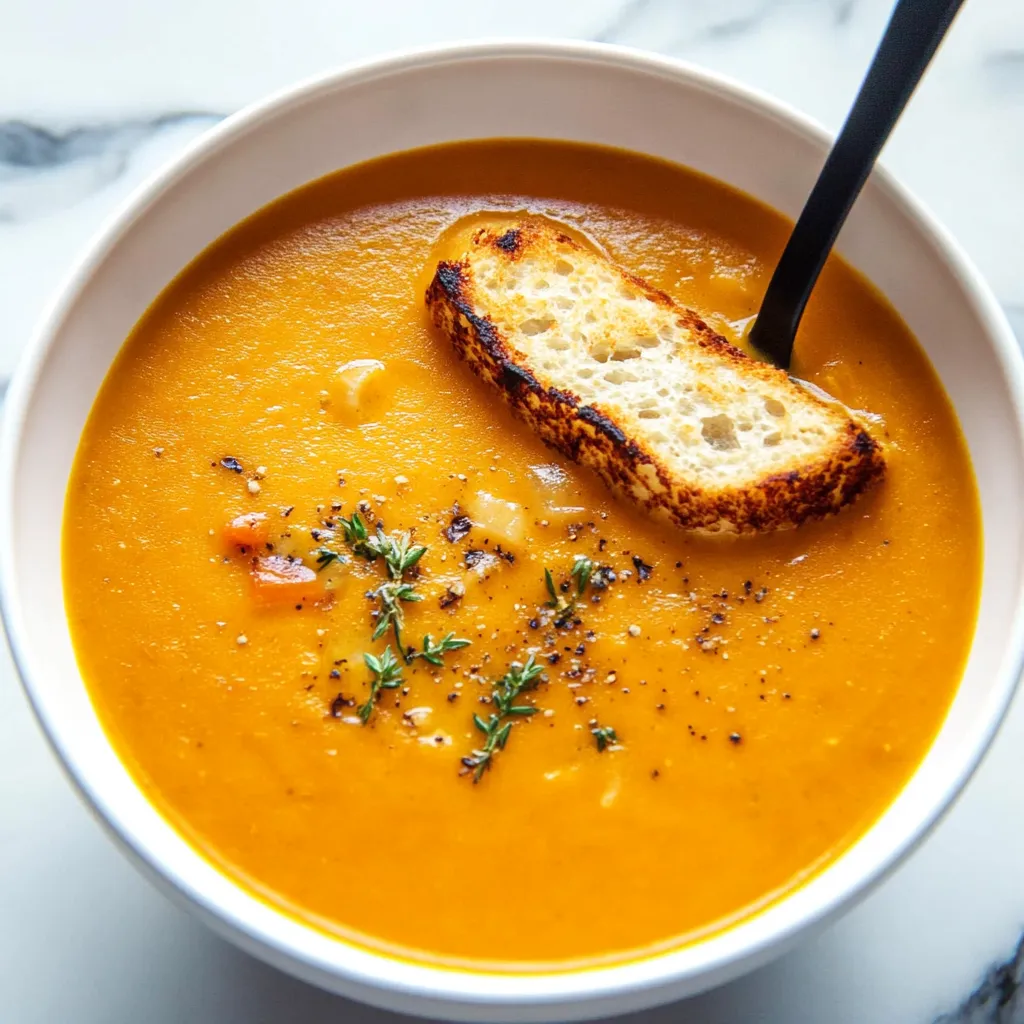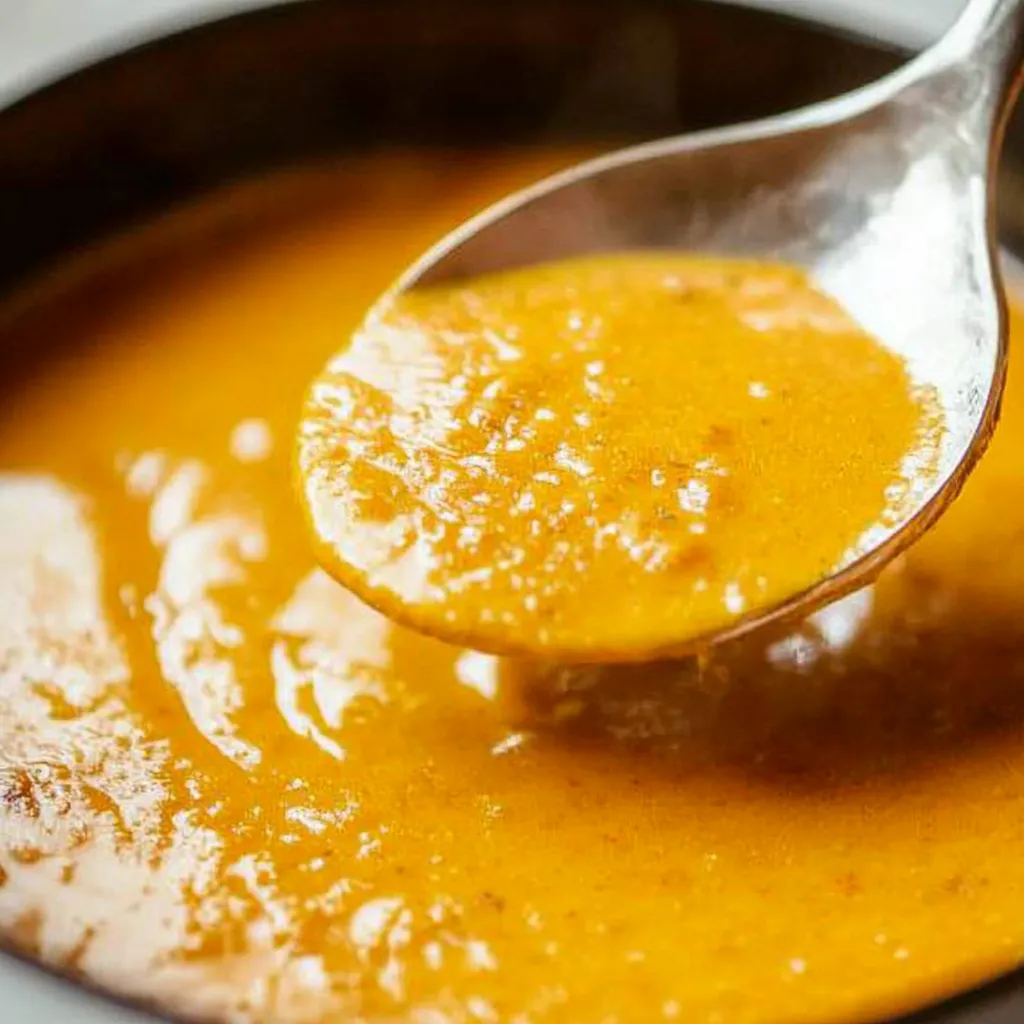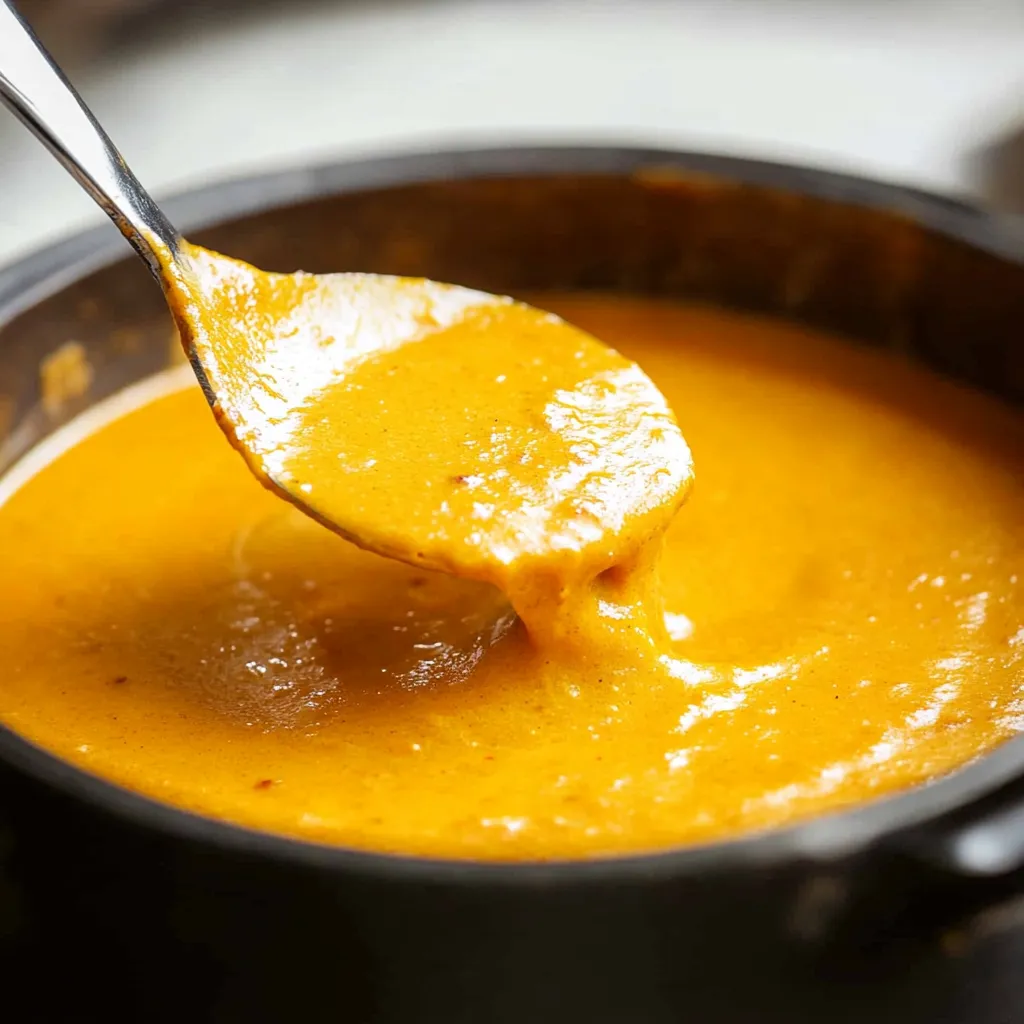 Pin it
Pin it
Unlock the game-changing method for making incredibly hearty veggie soup with one simple trick: oven roasting. See ordinary vegetables turn into sweet, golden treasures as their natural sugars develop into bold, layered flavors. The mix of candy-like carrots, nutty parsnips, smooth sweet potatoes, and punchy garlic blend into a soup so smooth and rich, you'd never guess it's completely dairy-free. Roasting works its magic by pulling out moisture and cranking up every taste note, creating depth that simple boiling just can't touch.
I stumbled on this method after many weekends playing around in my kitchen, trying to nail down the ultimate veggie soup approach. That very first pot of oven-roasted soup changed the game – my whole family crowded around, shocked that such a creamy, luxurious soup had nothing but vegetables in it. Now whenever the temperature drops, my kitchen fills with the heavenly smell of veggies browning in the oven every Sunday.
Finding Top-Quality Vegetables
- Sweet potatoes: Go for rich orange ones with smooth skin and no marks. They should feel substantial when picked up – that means they're packed with sweet flesh that'll roast beautifully.
- Red bell peppers: Pick ones with bright, shiny skin that feels tight and solid. Fresh green stems and a hefty weight show they're juicy and ready for roasting.
- Parsnips: Get medium ones with light-colored skin and firm texture. The smaller guys taste sweeter while bigger ones can get tough.
- Carrots: Look for vivid orange ones that snap when bent. Skip any with green tops – they'll taste bitter in your soup.
- Yellow onions: Choose solid, weighty onions with crackly outer layers and no sprouts. Good ones feel hard when you give them a gentle squeeze.
- Whole garlic: Go for tight, solid heads without green shoots. Each piece should be full and wrapped in paper, not shrunken.
- Fresh herbs: Grab bunches with vibrant color that smell amazing. Stay away from any wilted or yellow bits.
- Whole spices: Grab whole cumin and coriander seeds to crush just before cooking – they'll pack way more flavor.
Making Your Standout Soup
- Nailing the Roast
- First, focus on your cutting skills – even pieces mean everything cooks at the same pace. Keep sweet potatoes and roots in small cubes but peppers can be chunkier. Getting the sizes right makes all the difference.
- Flavor Building
- Start by coating everything in olive oil so each bit gets a thin layer that helps browning. Then add freshly ground spices, making sure they get into all the nooks. The oil wakes up those spice flavors during cooking.
- Heat Control
- Get your baking sheets hot in the oven first. When veggies hit that hot surface, they start browning right away. Don't crowd the pan – each piece needs breathing room to brown properly.
- Watching for Doneness
- Look for key signs of perfect roasting: edges turning golden, veggies getting slightly smaller as water cooks off, and tasty brown spots appearing. Your kitchen will smell incredible.
- Creating Depth
- Once veggies finish roasting, their sugars concentrate and flavors amp up. Add them to your pot with rich stock to build flavor layers you just can't get from basic boiling.
- Smart Blending
- Begin blending on low to break down the bigger chunks, then gradually speed up. Move through the pot carefully to catch everything. You'll watch it transform into a silky-smooth mixture.
- Final Touches
- Taste and thin with extra stock if needed – you want it flowing like silk from your spoon. Season carefully, remembering the flavors get stronger as it sits.
 Pin it
Pin it
My grandma always said making soup was more art than cooking, needing care and focus. The first time she showed me how to roast veggies, it was like seeing magic happen. Now when I watch vegetables turn golden brown in the oven, their sweetness developing and flavors getting stronger, I totally get what she meant about turning basic ingredients into something special.
Tasty Serving Suggestions
This smooth-as-silk soup deserves to be shown off right. Start with warm bowls so it stays hot longer. Drizzle some good olive oil on top in pretty patterns. For lunch, pair it with thick sourdough toast topped with melty aged cheddar. When friends come over, dress it up with homemade garlic bread bits, fresh herb sprinkles, and a spoonful of herb-mixed yogurt or blended cashew cream.
Tasty Twists
Let what's fresh guide your soup adventures. In fall, try butternut squash instead of sweet potatoes – they get super sweet when roasted. Throw in some cauliflower for extra creaminess without dairy. Add roasted mushrooms for deep, savory richness. Each switch creates a whole new soup while keeping that amazing smooth texture.
Smart Storage
Keep your soup right to maintain its amazing texture and taste. Use glass containers with snug lids, leaving just a bit of space at the top. It'll stay good in the fridge up to five days – and often tastes even better the next day. When freezing, leave some room for expansion. Split into meal-sized portions for easy reheating. Thaw in your fridge overnight, then warm slowly on the stove, stirring now and then and adding a splash of hot stock if needed to bring back the perfect thickness.
After years of tweaking this method, I've learned that taking your time with roasting creates something special that no amount of seasoning can fake. Each tray of golden veggies tells me they're done through smell, look, and that perfect tender bite. This soup has become our family tradition, making our home cozy and drawing everyone into the kitchen to watch plain vegetables transform into bowls of golden comfort.
 Pin it
Pin it
Frequently Asked Questions
- → Why is roasting so important?
- It brings out the sweetness in vegetables by caramelizing their natural sugars, which creates way more flavor than boiling or steaming.
- → Why chop veggies into smaller bits?
- Tiny, evenly cut pieces cook faster and more evenly. Big chunks might burn outside while staying raw inside.
- → Can I mix up the veggies?
- In small ways, yes—like swapping sweet potatoes for squash. Larger swaps make it a whole new dish, though.
- → Is this meal-prep friendly?
- Totally! Flavors get even better after sitting in the fridge overnight, making it perfect ahead of time.
- → Why roast garlic with the skin on?
- The skins act like a little shield, keeping the garlic soft and sweet as it roasts without burning.
